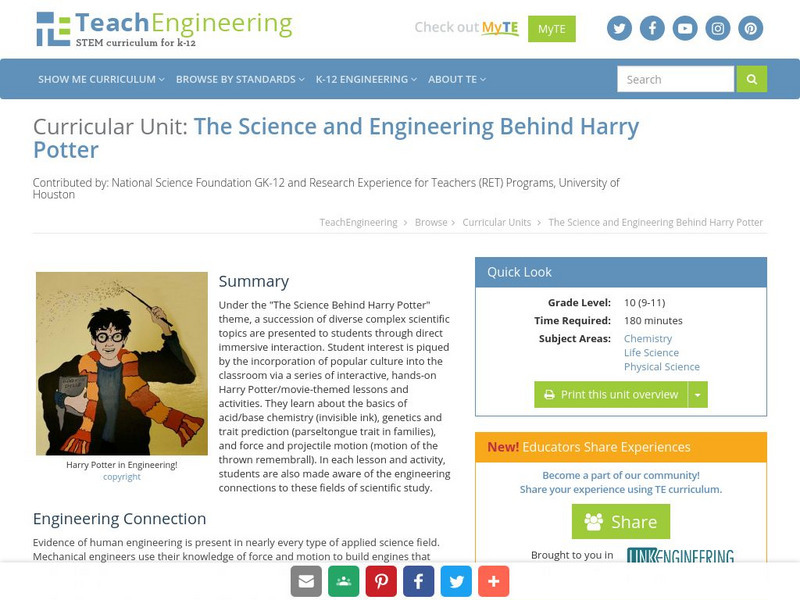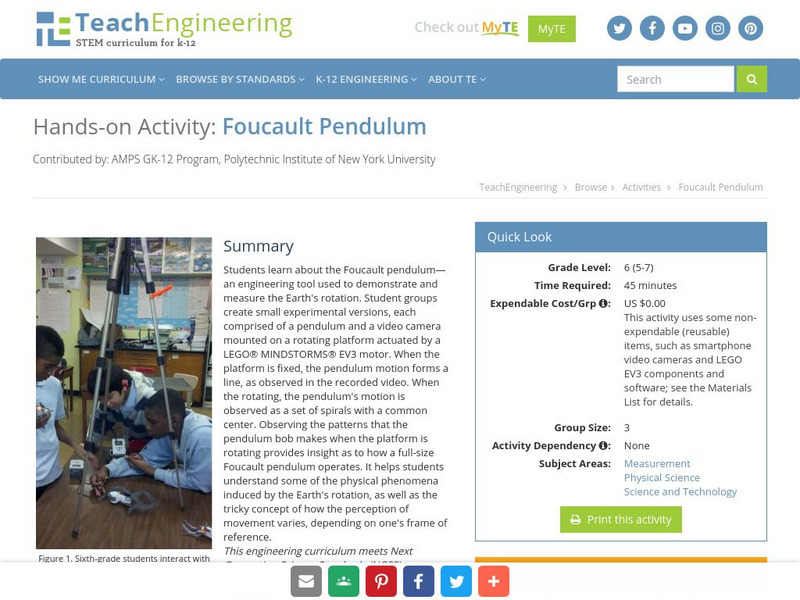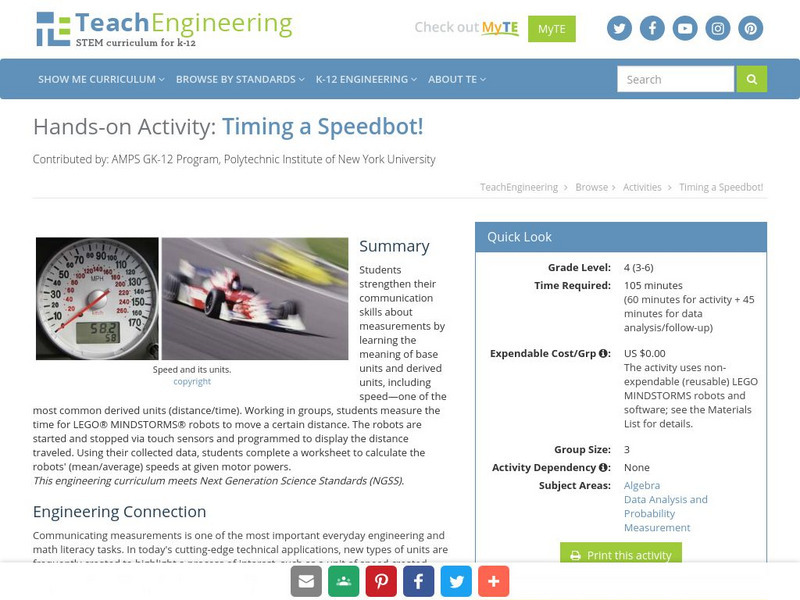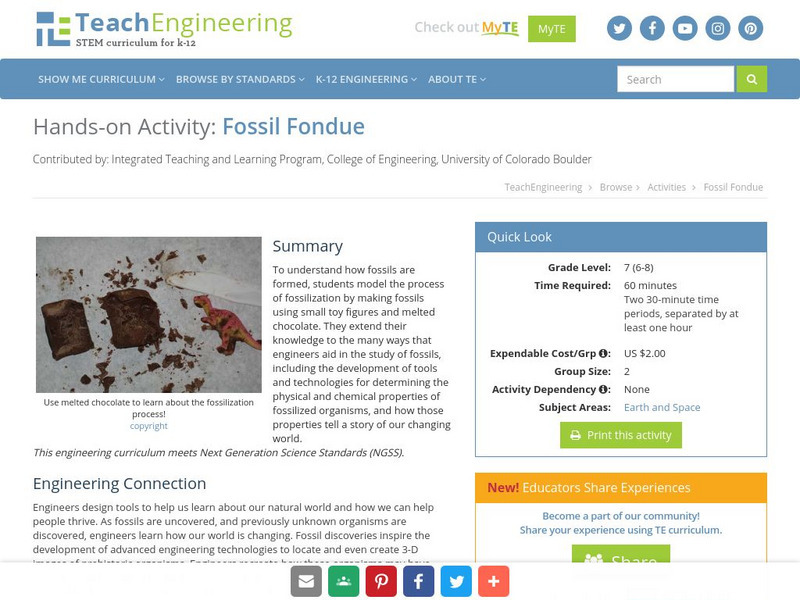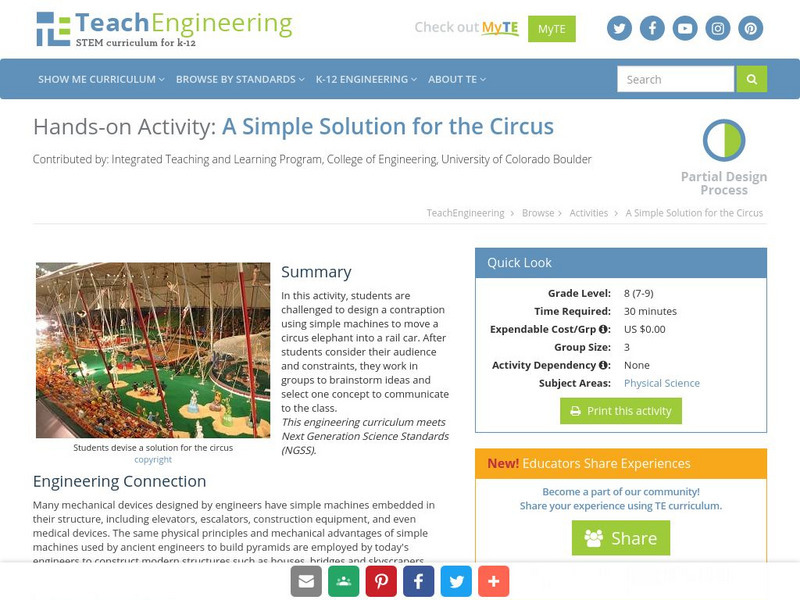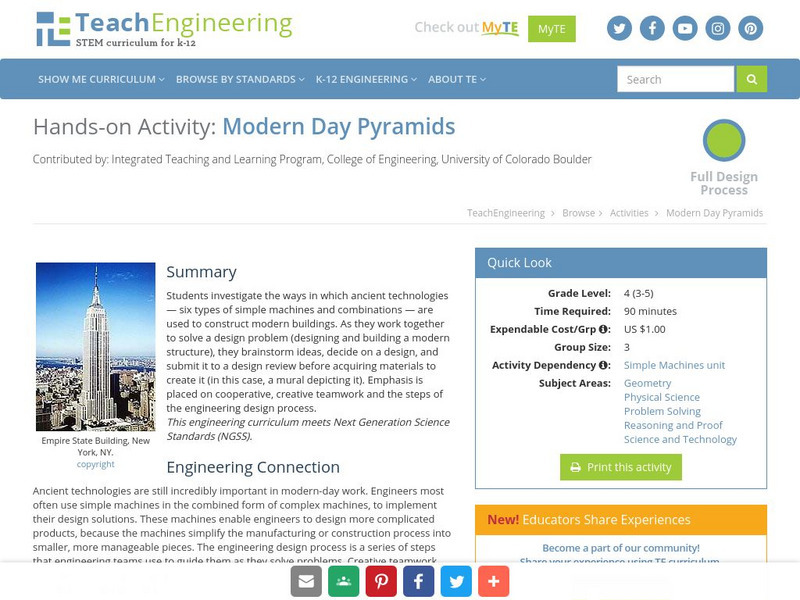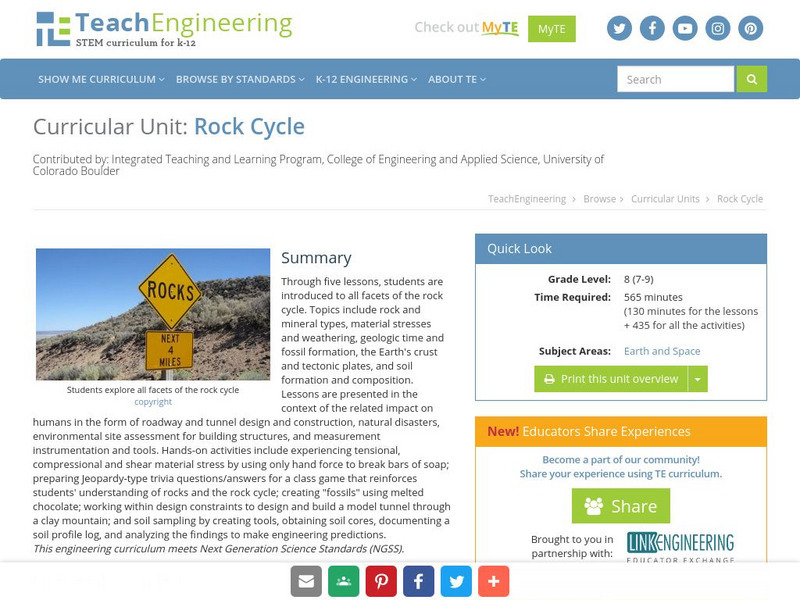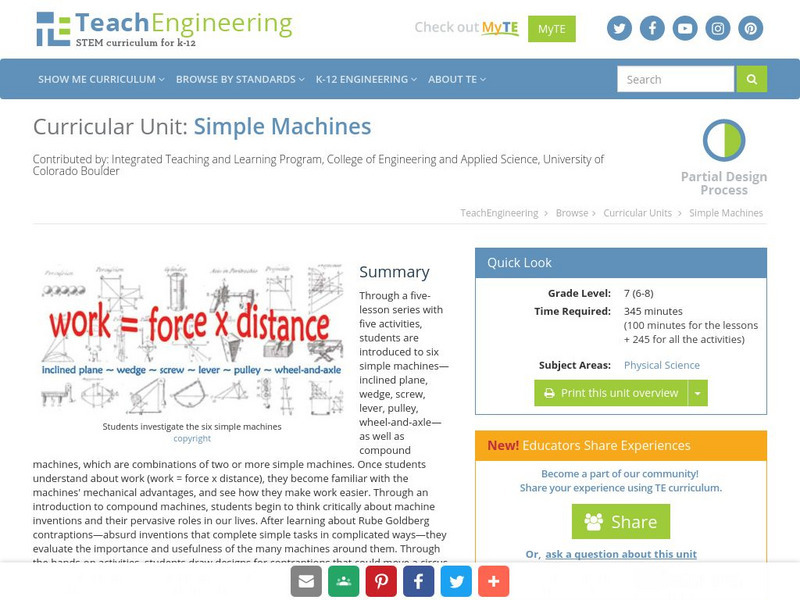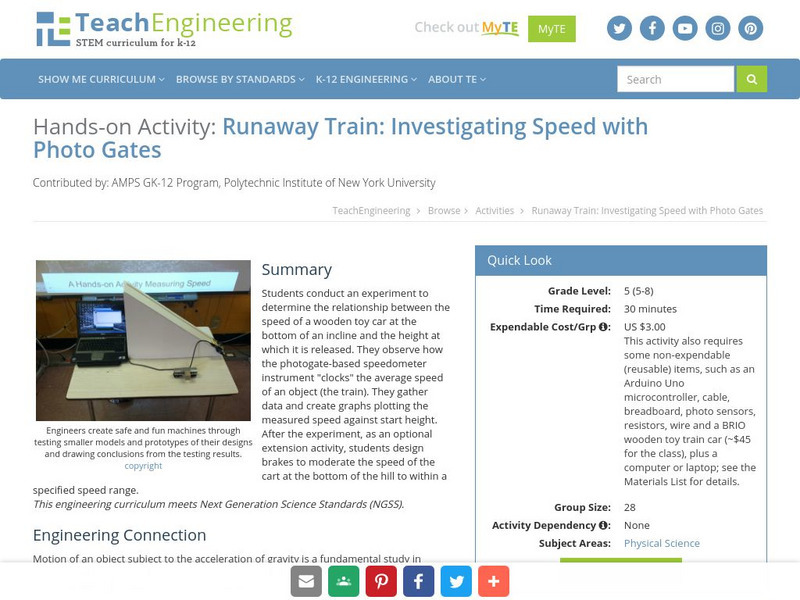TeachEngineering
Teach Engineering: Digital Mapping and Geographic Information Systems (Gis)
Geographic information systems (GIS), once used predominantly by experts in cartography and computer programming, have become pervasive in everyday business and consumer use. This unit explores GIS in general as a technology about which...
TeachEngineering
Teach Engineering: Engineering Out of Harry Situations
Under the "The Science Behind Harry Potter" theme, a succession of diverse complex scientific topics are presented to students through direct immersive interaction. Student interest is piqued by the incorporation of popular culture into...
TeachEngineering
Teach Engineering: Implementing Biomimicry and Sustainable Design
This unit provides students with an opportunity to study ecological relationships with an emphasis on the Sonoran Desert. Students appreciate the complexity and balance that supports the exchange of energy and matter within food webs....
TeachEngineering
Teach Engineering: The Three Color Mystery
Students are introduced to an engineering challenge in which they are given a job assignment to separate three types of apples. However, they are unable to see the color differences between the apples, and as a result, they must think as...
TeachEngineering
Teach Engineering: Where's the Water?
In this lesson, the students will conduct an investigation to purify water. Students will engineer a method for cleaning water, discover the most effective way to filter water, and practice conducting a scientific experiment.
TeachEngineering
Teach Engineering: All About Water!
Students learn about the differences between types of water (surface and ground), as well as the differences between streams, rivers and lakes. Then, they learn about dissolved organic matter (DOM), and the role it plays in identifying...
TeachEngineering
Teach Engineering: Human Water Cycle
Students learn about the human water cycle, or how humans impact the water cycle by settling down in civilizations. Specifically, they learn how people obtain, use and dispose of water. Students also learn about shortages of treated,...
TeachEngineering
Teach Engineering: Hidden in Plain Sight
Steganography is the science and art of hiding messages in plain sight so only the sender and intended recipient know the existence of a message. Steganography can be characterized as security through obscurity. Through this lesson,...
TeachEngineering
Teach Engineering: Engineering Brainstorming
Young scholars act as an engineering consulting firm with the task to design and sell their idea for a new vehicle power system. During the brainstorming activity (Generate Ideas), students determine and comprehend what type of...
TeachEngineering
Teach Engineering: Foucault Pendulum
Students learn about the Foucault pendulum, an engineering tool used to demonstrate and measure the Earth's rotation. Student groups then create small experimental versions, each comprised of a pendulum and a video camera mounted on a...
TeachEngineering
Teach Engineering: How Does an Ultrasonic Sensor Work?
Students learn how ultrasonic sensors work, reinforcing the connection between this sensor and how humans, bats, and dolphins estimate distance.
TeachEngineering
Teach Engineering: What Is Engineering? What Is Design?
An overview of engineering and design which introduces the students to the basic steps of the engineering design process. This lesson challenges students to plan a picnic for their friends by considering its various components as they go...
TeachEngineering
Teach Engineering: Timing a Speedbot!
Students strengthen their communication skills by first learning the meaning of base units and derived units. Then, working in groups, students measure the time for LEGO MINDSTORMS NXT robots and calculate the robots' average speeds at...
TeachEngineering
Teach Engineering: Biorecycling: Using Nature to Make Resources From Waste
By studying key processes in the carbon cycle, such as photosynthesis, composting, and anaerobic digestion, students learn how nature and engineers biorecycle carbon.
TeachEngineering
Teach Engineering: Android Pendulums
Students investigate the motion of a simple pendulum through direct observation and data collection using Android devices and the AccelDataCapture app.
TeachEngineering
Teach Engineering: Into the Swing of Things
Students learn the basic properties of periodic and harmonic motion, and how the rearrangement of the simple pendulum equation can be used to solve for gravitational acceleration, pendulum length, and gravity. At lesson end, students are...
TeachEngineering
Teach Engineering: Fossil Fondue
To understand how fossils are formed, students model the process of fossilization by making fossils using small toy figures and melted chocolate. They extend their knowledge to the many ways that engineers aid in the study of fossils,...
TeachEngineering
Teach Engineering: A Simple Solution for the Circus
In this activity, students are challenged to design a contraption using simple machines to move a circus elephant into a rail car. After students consider their audience and constraints, they work in groups to brainstorm ideas and select...
TeachEngineering
Teach Engineering: Modern Day Pyramids
Students investigate the ways in which ancient technologies - six types of simple machines and combinations - are used to construct modern buildings. As they work together to solve a design problem (designing and building a modern...
TeachEngineering
Teach Engineering: The Claw
Students learn about gear ratios and power by operating toy mechanical cranes of differing gear ratios. They attempt to pick up objects with various masses to witness how much power must be applied to the system to oppose the force of...
TeachEngineering
Teach Engineering: Slinkies as Solenoids
In this activity, students use an old fashion children's toy, a metal slinky, to mimic and understand the magnetic field generated in an MRI machine. The metal slinky mimics the magnetic field of a solenoid, which forms the basis for the...
TeachEngineering
Teach Engineering: Rock Cycle
Through five lessons, students are introduced to all facets of the rock cycle. Topics include rock and mineral types, material stresses and weathering, geologic time and fossil formation, the Earth's crust and tectonic plates, and soil...
TeachEngineering
Teach Engineering: Simple Machines
Through a five-lesson series with five hands-on activities, students are introduced to six simple machines - inclined plane, wedge, screw, lever, pulley, wheel-and-axle - as well as compound machines, which are combinations of two or...
TeachEngineering
Teach Engineering: Runaway Train: Investigating Speed With Photo Gates
Students conduct an experiment to determine the relationship between the speed of a wooden toy car at the bottom of an incline and the height at which it is released. They observe how the photogate-based speedometer instrument "clocks"...

